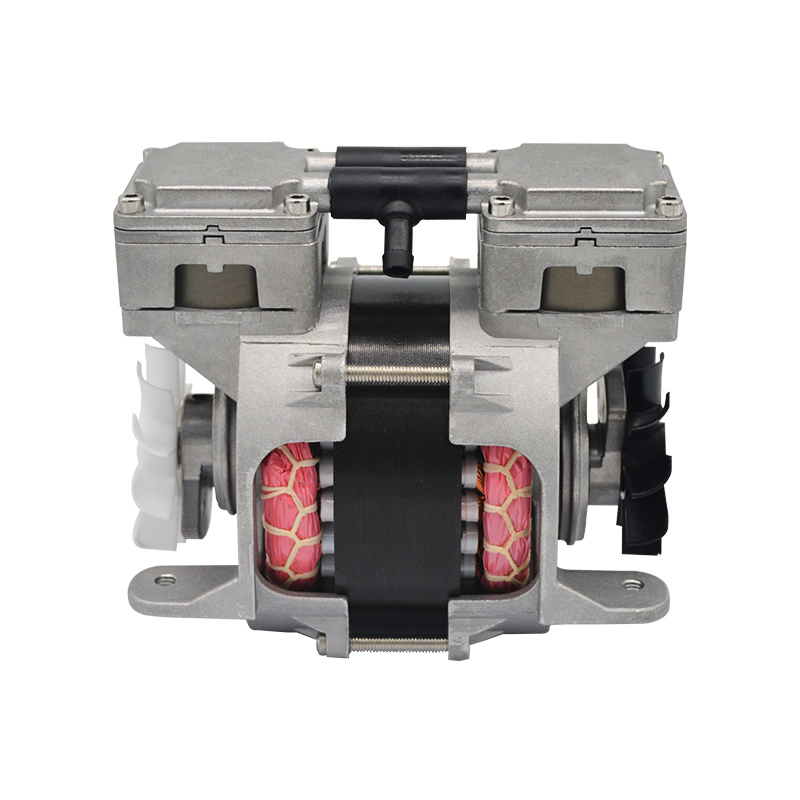Exploring Oxygen Concentrator Air Compressors: Essential Lifelines for Respiratory Health
2024-10-16
In recent years, the demand for medical equipment that aids in respiratory health has skyrocketed, particularly for individuals suffering from conditions like chronic obstructive pulmonary disease (COPD), pneumonia, and other respiratory illnesses. Among the key devices that have emerged as essential tools in this domain are oxygen concentrators equipped with air compressors. This blog delves into what oxygen concentrator air compressors are, how they work, their benefits, and their vital role in enhancing the quality of life for patients requiring supplemental oxygen.
What Is an Oxygen Concentrator?
An oxygen concentrator is a medical device designed to provide a continuous supply of oxygen to patients with respiratory issues. Unlike traditional oxygen tanks, which store oxygen gas, oxygen concentrators work by drawing in ambient air and removing nitrogen, concentrating the oxygen for therapeutic use. This process allows patients to receive the required level of oxygen without the need for bulky tanks or frequent refills.
The Role of the Air Compressor
At the heart of an oxygen concentrator is the air compressor, which plays a crucial role in the oxygen concentration process. The air compressor serves the following functions:
1. Air Intake: It draws in ambient air from the surroundings.
2. Compression: The compressor increases the pressure of the incoming air, allowing it to pass through the concentrator's molecular sieve beds, where nitrogen is removed.
3. Oxygen Delivery: Once the air is compressed and nitrogen is filtered out, the enriched oxygen is delivered to the patient via a nasal cannula or mask.
How Does an Oxygen Concentrator Work?
The operation of an oxygen concentrator involves several key steps:
1. Air Intake: The air compressor draws in ambient air, which consists of approximately 78% nitrogen and 21% oxygen, along with trace gases.
2. Compression and Filtration: The compressed air is directed into the molecular sieve beds containing zeolite, a material that selectively adsorbs nitrogen molecules, allowing oxygen to pass through.
3. Oxygen Storage: The purified oxygen is collected in a storage tank, ensuring a steady supply for the patient.
4. Delivery: The concentrator then delivers the concentrated oxygen to the patient through a nasal cannula or mask, providing the necessary therapeutic support.
5. Cycle Repetition: The process is cyclical, with the compressor alternating between compressing air and allowing the molecular sieves to regenerate by releasing the trapped nitrogen.
Benefits of Oxygen Concentrator Air Compressors
1. Continuous Supply of Oxygen
One of the most significant advantages of oxygen concentrator air compressors is their ability to provide a continuous supply of oxygen, making them ideal for patients requiring long-term oxygen therapy.
2. Portability
Many modern oxygen concentrators are designed to be compact and lightweight, allowing for greater mobility. Patients can move around their homes or even travel with these devices, which enhances their quality of life.
3. Cost-Effective
Using an oxygen concentrator is often more cost-effective than traditional oxygen tanks, which require refills and can be expensive over time. Once purchased, an oxygen concentrator provides an ongoing source of oxygen without the need for additional costs.
4. User-Friendly
Oxygen concentrators are designed to be user-friendly, with straightforward controls and minimal maintenance requirements. Many devices feature alarms and indicators to alert users when service is needed or when oxygen levels are low.
5. Improved Quality of Life
By providing a consistent and reliable source of oxygen, oxygen concentrators significantly improve the quality of life for patients with respiratory conditions. They allow individuals to engage in daily activities without the fear of oxygen depletion.
Choosing the Right Oxygen Concentrator Air Compressor
When selecting an oxygen concentrator, several factors should be considered:
- Oxygen Output: Ensure the concentrator provides the required flow rate for the patient’s specific needs, typically measured in liters per minute (LPM).
- Portability: For active patients, look for lightweight and portable models that are easy to transport.
- Noise Level: Consider the noise level of the compressor, especially for home use. Quieter models can improve comfort for both the patient and those around them.
- Maintenance Requirements: Understand the maintenance needs of the device, including filter changes and servicing schedules.
Conclusion
Oxygen concentrator air compressors play a pivotal role in modern respiratory health management. With their ability to deliver concentrated oxygen efficiently and cost-effectively, they have become essential tools for patients requiring supplemental oxygen. By understanding how these devices work and their benefits, patients and caregivers can make informed decisions to enhance their respiratory care.
As we continue to navigate the challenges of respiratory diseases, oxygen concentrators equipped with air compressors will remain vital lifelines, enabling individuals to breathe easier and live fuller lives.



